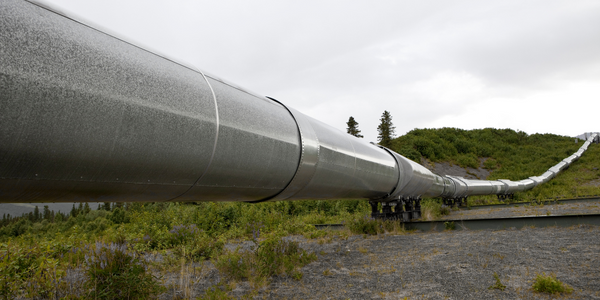LexisNexis® Home Inspection Index boosts inspection return-on-investment
Customer Company Size
Large Corporate
Region
- America
Country
- United States
Product
- LexisNexis® Home Inspection Index
Tech Stack
- Predictive Model
- Proprietary and Public Record Datasets
- System-to-System Connection
Implementation Scale
- Pilot projects
Impact Metrics
- Cost Savings
- Productivity Improvements
- Customer Satisfaction
Technology Category
- Analytics & Modeling - Predictive Analytics
- Application Infrastructure & Middleware - Data Exchange & Integration
Applicable Functions
- Business Operation
- Quality Assurance
Use Cases
- Predictive Maintenance
- Remote Asset Management
Services
- Data Science Services
- System Integration
About The Customer
This case study is regarding a homeowners insurance carrier that has been a leader in bringing the digital experience to the homeowners insurance space, providing on-line quotes, services and purchase capabilities. This company acquires and serves customers through both an agency channel and its direct-to-consumer website, using a streamlined process accompanied by a proprietary mapping system. The business is focused on aggressively managing loss ratios in its current portfolio while increasing the number of policies in force (PIF) through multi-state expansion.
The Challenge
Like many carriers, this company struggled with managing inspection resources for the greatest return on investment. It lacked the ability to specifically identify those properties most in need of inspection at the time of policy renewal. Instead, this carrier conducted selective inspections of properties in high hazard areas; a costly and time intensive method with little to no perceivable impact on actionable rates. As losses continued to mount, alarms were raised across the enterprise. The call went out for a cost-effective solution that would cause minimal disruption to the current process while significantly increasing actionable discovery rates, thereby reducing losses.
The Solution
LexisNexis® Home Inspection Index is a predictive model solution that leverages data from multiple proprietary and public record datasets and returns an index value ranging from 1 to 5 for each property (1 being least likely to be in need of inspection, 5 being most likely to be in need of inspection), accompanied by model indicators and attributes. Home Inspection Index fits seamlessly into a carrier’s existing workflow and is accessible from the LexisNexis platform through a system-to-system connection. With Home Inspection Index, this carrier could better identify the most high-risk properties and target inspection resources accordingly, saving time and money while reducing losses from undiscovered risks.
Operational Impact
Quantitative Benefit

Case Study missing?
Start adding your own!
Register with your work email and create a new case study profile for your business.
Related Case Studies.

Case Study
Remote Monitoring & Predictive Maintenance App for a Solar Energy System
The maintenance & tracking of various modules was an overhead for the customer due to the huge labor costs involved. Being an advanced solar solutions provider, they wanted to ensure early detection of issues and provide the best-in-class customer experience. Hence they wanted to automate the whole process.
.png)
Case Study
Improving Vending Machine Profitability with the Internet of Things (IoT)
The vending industry is undergoing a sea change, taking advantage of new technologies to go beyond just delivering snacks to creating a new retail location. Intelligent vending machines can be found in many public locations as well as company facilities, selling different types of goods and services, including even computer accessories, gold bars, tickets, and office supplies. With increasing sophistication, they may also provide time- and location-based data pertaining to sales, inventory, and customer preferences. But at the end of the day, vending machine operators know greater profitability is driven by higher sales and lower operating costs.

Case Study
Predictive Maintenance for Industrial Chillers
For global leaders in the industrial chiller manufacturing, reliability of the entire production process is of the utmost importance. Chillers are refrigeration systems that produce ice water to provide cooling for a process or industrial application. One of those leaders sought a way to respond to asset performance issues, even before they occur. The intelligence to guarantee maximum reliability of cooling devices is embedded (pre-alarming). A pre-alarming phase means that the cooling device still works, but symptoms may appear, telling manufacturers that a failure is likely to occur in the near future. Chillers who are not internet connected at that moment, provide little insight in this pre-alarming phase.

Case Study
Remote Wellhead Monitoring
Each wellhead was equipped with various sensors and meters that needed to be monitored and controlled from a central HMI, often miles away from the assets in the field. Redundant solar and wind generators were installed at each wellhead to support the electrical needs of the pumpstations, temperature meters, cameras, and cellular modules. In addition to asset management and remote control capabilities, data logging for remote surveillance and alarm notifications was a key demand from the customer. Terra Ferma’s solution needed to be power efficient, reliable, and capable of supporting high-bandwidth data-feeds. They needed a multi-link cellular connection to a central server that sustained reliable and redundant monitoring and control of flow meters, temperature sensors, power supply, and event-logging; including video and image files. This open-standard network needed to interface with the existing SCADA and proprietary network management software.







